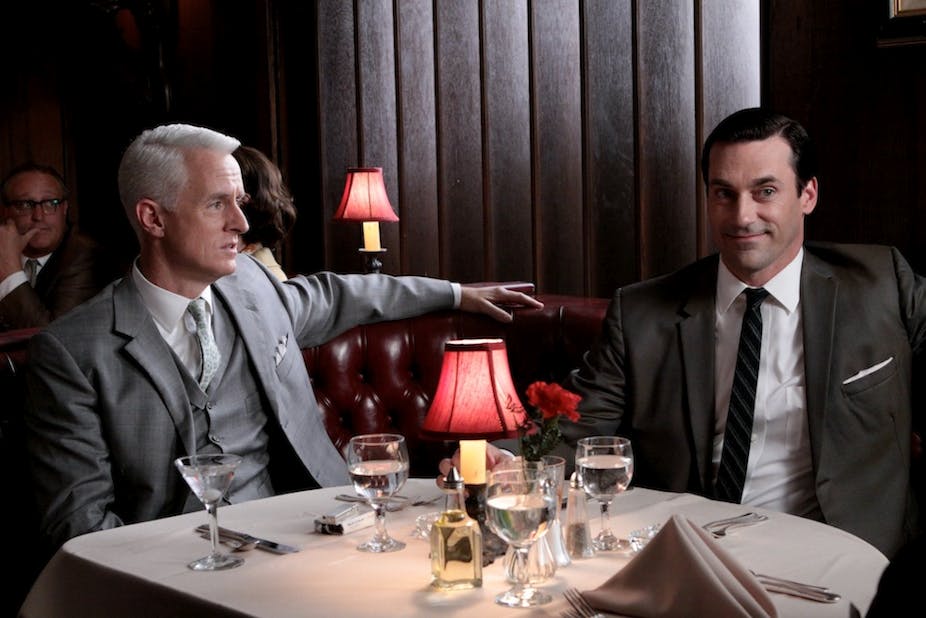Labor may have “ditched the witch”, but does the ejection of Julia Gillard from her seat of power close the book on the debate about sexism that she championed and the role of women in leadership?
Our first female prime minister is gone, but the feminist challenges she raised, and the battles she fought, are far from forgotten. They continue to sound their clarion call from the depths of a business and political culture that regresses increasingly to the Mad Men days.
We may think that we have left behind the attitudes found in the award-winning television series, where sexism and discrimination is overt and celebrated, but the legacy of the 1960’s remains deeply embedded in our DNA and that of our organisations.
But corporate and government leaders have an influence footprint that transcends the boundaries of these organisations, and they must exercise it by showing the way for a more mature, ethical and sustainable society where men and women are equal partners.
Board games
Thanks to the big stick of the ASX corporate governance guidelines, women now hold 15.6% of board seats compared to 8.3% three years ago. However, the rate of progress has stalled. In 2011, 68 women were appointed to the boards of ASX 200 companies. In 2012, this dropped to 41 and in 2013 there have been just nine appointments.
A 2013 report by law firm King & Wood Mallesons found that only 13% of directors regarded diversity as a key priority, compared to 63% the previous year. According to the authors, directors believe the diversity issue has been adequately dealt with. Good intentions have also not translated into action on gender issues: four in 10 companies do not have policies or targets in place, according to a 2013 gender parity report by Bain & Company and Chief Executive Women.
Failure to harness female talent continues for the following reasons:
First, there is a dissonance between corporate citizenship and profitability. Business has a social licence to operate irrespective of commitment to diversity. Reputational capital is acknowledged as a major strategic asset; however, most companies under-invest in corporate citizenship efforts, including diversity, and their citizenship ratings significantly lag their ratings on other basic performance attributes, such as quality and innovation.
Second, the business case is too often biased towards one-dimensional frameworks that encourage perverse drivers of business practice that privileges the short term and immediate over the sustainable and ethical. It is these very business frameworks that led to the corporate disasters associated with GFC and more recent examples of corporate malfeasance. They treat female labour as disposable, embracing or dispensing with it according to the vagaries of the economy.
Art of leadership
Third, it is hard to shift old-aged paradigms that align leadership with masculinity in the minds of both men and women.
By the sixth iteration, popular-culture heroes like James Bond might be expected to portray a softer, more sensitive male presence. Not so Daniel Craig, the most recent 007, who has been described as an ideally muscular Bond, less of a gentleman and more of a street fighter than previous incarnations.
In the business world, such masculine language and imagery has been co-opted to portray leadership – often as individualistic acts with back-stories of larger-than-life characters. Brash, driven, tough, the new adventurer, bold enough to challenge the status quo, leader as a helmsman, captain of a ship, eager and fearless young entrepreneur, corporate saviour - these are the descriptors for CEOs of the future, highlighted in recent research from Fortune 500, Hay group, IBM and Korn/Ferry.
While many of these traits raise a man’s status in masculine cultures such as Australia and the US, where competitiveness, assertiveness and ambition are valued, they are likely to make a woman less acceptable. Moreover, society reinforces masculinity at the helm. Recent Australian research indicates that both men and women nominate men as leadership exemplars, with women nominating men more often than men do.
More than words can say
Fourth, is the vilification of women. While subtle, hidden and subversive sexism has been acknowledged as a benign but virulent force that continues to stymie women’s progress, the rise of shameless and overt vilification of women is of major concern.
I refer to the increasing culture of tirade against female authority and the disrespectful depiction of women as an acceptable part of infotainment, a form of larrikinism that brings comedic levity to our political debate.
The mock menu of “Julia Gillard Kentucky Fried Quail – Small breasts, Huge Thighs & Big Red Box…” was not an aberration. It was the continuation of a verbal-abuse diet that was regularly meted out with impunity, a slap on the wrist at most: “ditch the witch”, “a menopausal monster”, “a lying cow”, “a horrible mouth on legs” and “political slut”, “get over it Julia, you’ve got a big arse”.
This ranting is not benign humour but the slippery slope of degradation that normalises disrespect for women in everyday discourse and is responsible, in part, for the unconscionable abuse and violence against women in our society. It provides a red light to masculine cultures, such as the defence forces that are once again exposed for recidivist sexism and misogyny at the highest ranks, with footage of soldiers engaged in sex. It fuels the default position of sporting bodies with displays of off-the-cuff commentary from high-level sporting officials that women should “shut up in public”.
As a society we hold ambiguous feelings towards women, particularly those at the helm, and attempts to address discrimination and sexism so far have been insufficient. More leadership is needed now.

